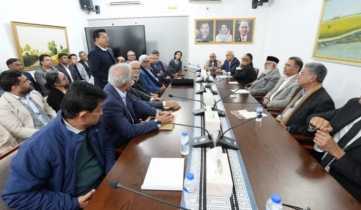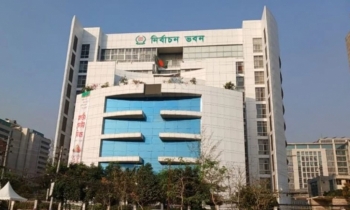
The share of unemployed tertiary-educated youth within the total unemployed population in Bangladesh increased to 27.8 percent in 2022 from 9.7 percent in 2013 as many struggled to find jobs that match their skills and educational qualifications, according to the latest World Bank (WB) report.
The report also said that nearly 12 lakh people in the country may face extreme poverty this year due to job losses and declining real wages.
Government jobs can accommodate a little over 5 percent of the total workforce, the Washington-based multilateral lender said in its report, titled "Bangladesh Development Update".
Many young people face challenges in pursuing entrepreneurship due to a lack of resources, financing and mentorship, the World Bank says
Besides, the private sector is not generating enough employment opportunities, it said.
While policies in many countries support entrepreneurship and startups, many young people in Bangladesh face challenges in pursuing entrepreneurship due to a lack of resources, financing and mentorship, according to the WB.
It said limited access to financing due to limited collateral and gender discrimination by banks is a major constraint for female entrepreneurs in expanding their businesses and exporting products.
On the other hand, numerous studies indicate a growing mismatch between the competencies of graduates and the demands of the job market, so unemployment remains high.
"Younger and more educated cohorts, especially females, face high unemployment rates," the report said.
Despite a decline in the country's overall unemployment rate between 2016 and 2022, nearly one-fifth of young women remain unemployed, indicating greater difficulties for women in finding suitable jobs after completing higher education.
Discrimination in pay, upward mobility and hiring practices inhibit female employment, the report noted.
While launching the report at the WB office in Dhaka yesterday, Abdoulaye Seck, World Bank country director for Bangladesh and Bhutan, said the analysis indicates that young people, particularly in urban areas, face significant challenges in finding a job.
"Most new jobs have been created in the agriculture sector, where a significant portion are low-paying informal employment," he said.
Not enough jobs have been created in the industry and service sectors. Most firms in Bangladesh are small and encounter various obstacles for growth and job creation, he added.
Between 2016 and 2022, the manufacturing sector experienced an average annual growth of 9.1 percent, but employment in this sector declined by 9.6 percent. Most new jobs were created in the agriculture sector, where a significant portion are low-paying informal employment, according to the WB.
The informal sector continues to dominate the economy, accounting for 84.9 percent of the total employment, the multilateral lender said.
Job creation in large industries has stagnated. Frontier readymade garments firms, which generate nearly half of the country's total firm revenues, provide only 1 out of every 12 formal private sector jobs, it added.
The report also said foreign direct investment (FDI) remains low and the business environment has significant shortcomings, including challenges in accessing finance and energy, high costs of doing business and cumbersome customs and trade regulations.
Overall, real wages declined by an average of 2.6 percent across all categories, indicating a significant deterioration in the standard of living, particularly for low-income groups.
Average hourly wages in Bangladesh remain lower than those in lower middle-income countries, South Asia and structural peer countries.
The report attributed low wages to Bangladesh's low labour productivity compared to its peers.
The WB highlighted significant challenges facing Bangladesh in job creation, job quality, skills shortages and skills mismatches.
It said the private sector will need to generate more jobs, but most firms in Bangladesh are small and face significant obstacles for growth.
Large industries have stagnated in job creation, and foreign direct investment (FDI) remains low due to a challenging business environment.
To address these challenges, Bangladesh needs a comprehensive policy approach that improves the business environment, attracts foreign investment, promotes export diversification and enhances education and technical training systems to align with employer demands.
In the report, the WB projected that extreme poverty at the $2.15 per day threshold is projected to increase by 0.7 percentage points to 6.1 percent in 2024.
As a result, 12 lakh people may be affected this year, the report said.
Workers in Bangladesh's industrial and service sectors were significantly impacted between FY23 and FY24. Job losses in these sectors reached 5.6 percent and 4.1 percent respectively, accompanied by wage reductions of 2.3 percent in industry and 0.7 percent in services at the time.
According to the WB report, about 20 percent of the population remains vulnerable to poverty due to shared characteristics with the poor.
In 2022, four in 10 Bangladeshis were either poor or at risk of falling into poverty. Urban vulnerability grew, with more at-risk individuals living in cities by 2022.
It also said that vulnerability to poverty has shifted towards urban areas.





































